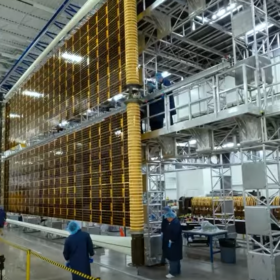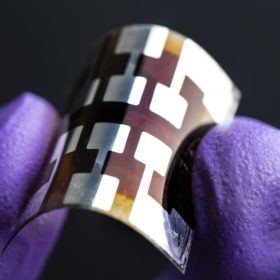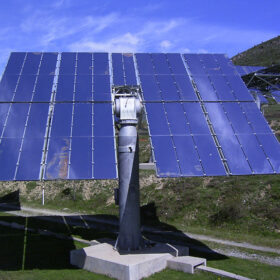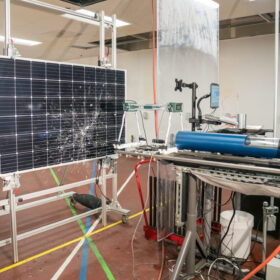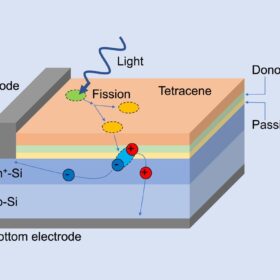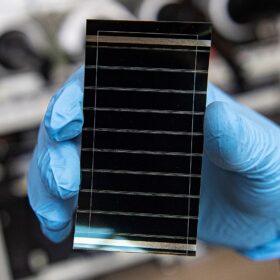Redwire deploys 60 kW roll-out solar array for the first lunar orbit space station
The company held the first test deployment of its solar arrays designed to power solar-electric propulsion systems for the Gateway space station.
U.S. startup offers tin oxide, nickel oxide materials for flexible perovskite solar cells, modules
Sofab Inks, a spinoff of University of Louisville, said its transport layer materials enable perovskite solar cells with greater stability, efficiency, and scalability compared to incumbent materials.
Perovskite tandem provider Swift Solar to explore telecom tower integration
The MIT/Stanford spinoff announced a collaboration with American Tower Corporation to evaluate high energy density solar panels for telecom towers.
CSP-driven multigeneration system combines hydrogen generation with compressed air, pumped hydro storage
Researchers have designed a novel multigeneration energy system that provides five outputs, namely electricity, hydrogen, cooling, heating, and hot water. The system is mainly powered by a solar heliostat system and incorporates compressed air and pumped hydro storage technologies for storing surplus power.
Module reliability scorecard reveals widespread quality risk
Independent testing laboratory Kiwa-PVEL today published the 11th edition of its PV Module Reliability Scorecard, having extensively tested PV modules from 50 different manufacturers.
Department of Energy axes $3.7 billion in clean energy demonstration funding
DOE said the projects “failed to advance the energy needs of the American people.”
MIT scientists developing silicon solar cell based on singlet exciton fission
Scientists in the United States have designed a microwire solar cell that could reportedly enable the coupling of singlet fission with silicon. Key to their achievement was an interface that transfers the electrons and holes sequentially into silicon instead of both at once.
Inverted perovskite solar cell based on ionic salt achieves 26% efficiency
An international team led by the U.S. National Renewable Energy Laboratory (NREL) has used ionic salt for the electron transport layer of a perovskite solar cell to improve device stability and performance. Test results showed a 26% power conversion efficiency with 2% degradation after 2,100 hours of 1-sun operation at 65 C.
AI platform brings real-time carbon tracking to solar and storage
WattCarbon’s ‘Aristotle’ provides granular data on asset performance and emissions profiles.
Cornell researchers bring art and science to flexible solar ‘skin’
In a pilot project the researchers plan to create a portable, dual-axis canopy of approximately 150 square feet that will morph and track the sun to optimize solar energy capture.
